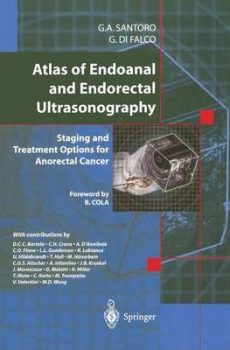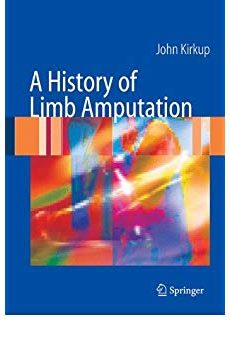
A History of Limb Amputation
16,183.00₹ 6,400.00₹
This book opens with a unique historical review of natural amputations due to congenital absence, disease, frostbite, animal trauma, and to punishment and ritual. The advent of surgical amputation and its difficulties form a major part of the book, summarising the evolution of the control of haemorrhage and infection, pain relief, techniques, instrumentation, complications, prostheses, results and case histories. Alternative procedures, increasingly important in the last two centuries, are also debated.

A Physician’s Guide to Coping with Death and Dying
1,750.00₹ 1,490.00₹
In “A Physician’s Guide to Coping with Death and Dying” Jan Swanson and Alan Cooper, a physician and a clinical psychologist with many years of experience, offer insights to help medical students, residents, physicians, nurses, and others become more aware of the different stages in the dying process and learn how to communicate more effectively with patients and their families. They also discuss the ways physicians and other caregivers can learn to reduce their own stress levels and avoid the risk of burnout, allowing them to achieve balance in their lives and be more effective professionally.
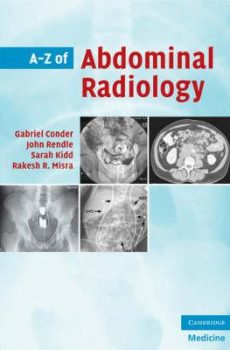
A-Z of Abdominal Radiology
6,790.00₹ 3,350.00₹
A-Z of Abdominal Radiology provides a concise, easily accessible radiological guide to the imaging of the common disorders of the abdomen and pelvis. Organised by A–Z, each entry gives easy access to the key clinical features of the condition. Section 1 reviews the relevant radiological anatomy of the abdomen and pelvis. This is followed by over 80 abdominal disorders, listing characteristics, clinical features, radiological features and relevant clinical management. Each disorder is highly illustrated to aid diagnosis. A–Z of Abdominal Radiology is an invaluable quick reference for the busy clinician and aide memoir for exam revision in both medicine and radiology.
- Introductory section emphasises the relevant abdominal anatomy to assist in diagnosis
- Concise text and numerous illustrations make this the ideal quick reference guide
- Advises which imaging technique to use for each condition
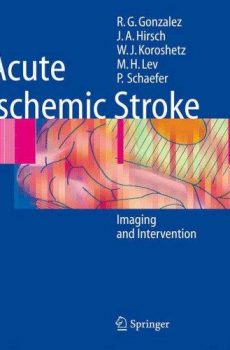
Acute Ischemic Stroke
11,900.00₹ 5,290.00₹
Acute Ischemic Stroke: Imaging and Intervention is a comprehensive presentation of the state-of-the-art in the diagnosis and treatment of acute ischemic stroke. This book, the first of its kind, offers a practical review of recent advances in stroke neuroimaging, and the latest therapeutic options for this disease.
Written by an internationally recognized experts who are members of the interdisciplinary stroke team at the Massachusetts General Hospital and Harvard Medical School, the book covers the pathophysiology, mechanisms and molecular manifestations of ischemic brain injury and its clinical presentations; the physical principles, and practical applications of CT, CT angiography and CT perfusion; a detailed discussion of MRI, MRA, as well as diffusion and perfusion MR imaging; and the clinical management of the acute ischemic stroke patient including intravenous thrombolysis and intra-arterial vascular recanalization.
Practical guidance is provided for the use of imaging in guiding therapeutic decisions efficiently. The book is richly illustrated with images and plentiful tables are available for easy reference. It will serve as a unique source of information for neurologists, emergency physicians, radiologists and other health care providers who care for the patient with acute ischemic stroke
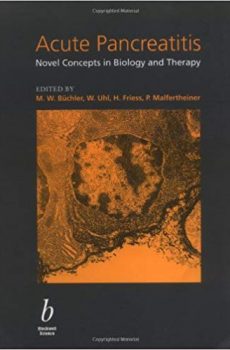
Acute Pancreatitis: Novel Concepts in Biology and Theraphy
14,980.00₹ 7,690.00₹
Still frightening to both patients and clinicians, acute pancreatitis is an acute inflammatory disease of the pancreatic gland that may lead to severe systemic response. Fortunately, the knowledge about this disease has increased considerably in the last two decades. On molecular and pathophysiologic bases, doctors do understand more clearly the primary events in the initiation of acute pancreatitis and its repair, and there are also new diagnostic tools now available. Clinically, it is of the utmost importance to establish a generally accepted classificaiton for the different entities of this disease–especially since new treatment concepts have been introduced in the last years. These include the approach to biliary acute pancreatitis by endoscopic procedures; promising compounds to interfere with the early stage of the disease; and anti-infectives for the later stages, where infected pancreatic necrosis plays a predominant role. In light of this new information, it is evident that the approach to acute pancreatitis should be managed interdisciplinarily to get the best treatment results.
Leading authorities from around the world have contributed to this volume, and special attention has been paid to new insights in pathophysiology and repair mechanisms, diagnosis and new treatment options.
This book provides a state-of-the-art update of acute pancreatitis and will be interest to basic scientists, physicians, clinicians, ICU specialists and surgeons.
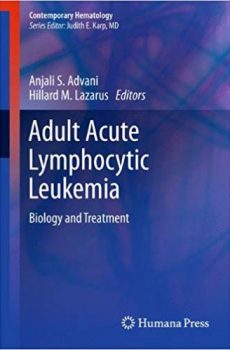
Adult Acute Lymphocytic Leukemia
19,990.00₹ 9,990.00₹
The current explosion of new areas of controversy in the treatment of acute lymphocytic leukemia in adults and young adults makes this comprehensive book a much needed reference for hematologists and oncologists. This book assembles leading authorities from around the globe to cover the full spectrum of ALL subtypes and their treatments. Specific topics of discussion include indications for allogeneic bone marrow transplant in first complete remission, the role of minimal residual disease in making treatment decisions, the treatment of young adults, and the treatment of Philadelphia chromosome positive ALL with the advent of the tyrosine kinase inhibitors. This is the first book to focus exclusively on the adult ALL patient. It provides a complete overview of diagnosis, molecular pathogenesis, evaluation, and treatment for this important patient population.
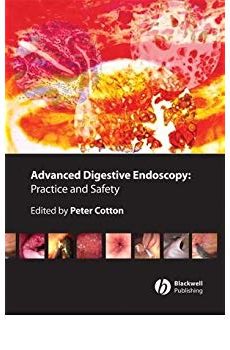
Advanced Digestive Endoscopy: Practice and Safety
14,590.00₹ 8,900.00₹
Advanced Digestive Endoscopy: Practice & Safety provides a practical manual on how to perform techniques safely and effectively in order to maximise value, and to reduce risks. Clearly structured, it covers training, endoscopy and imaging equipment, infection control, patient preparation and monitoring, complications and how to avoid and deal with them. Expanding on the content of Peter Cotton’s best–selling Practical Gastrointestinal Endoscopy, this instructive volume contains information and guidelines on all aspects of the practice of endoscopy, and is an ideal companion for both the trainee and the experienced endoscopist.
Key features include:
- Written by the leading international names in endoscopy
- Text has been expertly edited by Peter Cotton into a succinct and instructive format
- Presented in short paragraphs structured with headings, subheadings and bullet points
- Richly illustrated throughout with full–color photographs
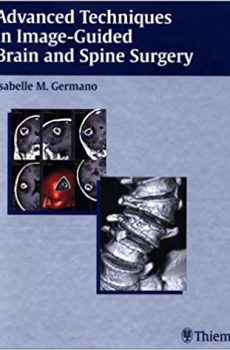
Advanced Techniques in Image-Guided Brain and Spine Surgery
14,300.00₹ 9,000.00₹
A comprehensive review of the state-of-the-art technology currently available for neuronavigation. It will provide the reader with the clinical applications of this technology to various aspects of cranial and spinal surgery.
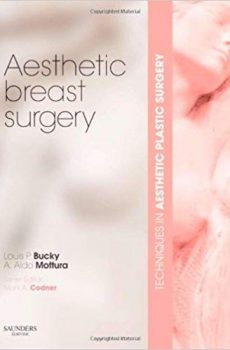
Aesthetic Breast Surgery
14,280.00₹ 5,900.00₹
This volume in the Techniques in Aesthetic Plastic Surgery Series gives you the very latest on the hottest areas in aesthetic breast surgery. Generously illustrated with many color operative photographs, line drawings and cases, the book focuses on the newest techniques and how to use them to get the best possible results. Positioning, marking, alternative options, surgical pitfalls and expert tips, tricks, and comments are presented in clear, clinical terms. Each portable volume is augmented with a fully searchable DVD containing video clips of key procedures, performed by experts as well as operative tricks and hints.
- Contains detailed full-color illustrations for clear visual guidance to each operative step.
- Includes a DVD with video clips of key procedures performed by an expert so you can see them performed in real time.
- Discusses common pitfalls to help you improve the quality of your technique.
- Features experts’ “tricks of the trade so you can learn the best approach to getting the optimal results.
- Provides international authorship for true breadth and depth of knowledge.
- Uses a consistent format, style, and approach throughout to make finding information easier.
- Includes coverage of implant selection, breast reduction, augmentation tips and tricks, and fat injections.
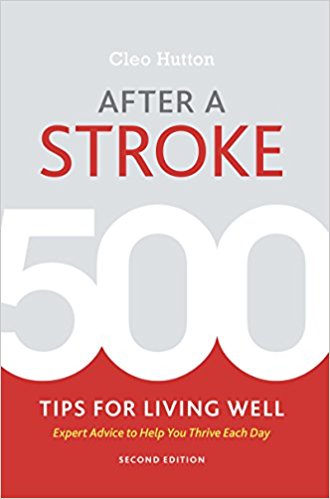
After a Stroke: 500 Tips for Living Well 2e
1,140.00₹ 740.00₹
This book will show you how to:
- Get the medical care you need
- Integrate robotics and other modern tools to help prevent spasticity and make daily life easier
- Navigate personal relationships as one partner becomes a survivor and another a caregiver
- Incorporate alternative and integrative therapies into your recovery
- Connect with organizations and outreach centres for stroke patients
- Get the most out of home care
- Cut through rhetoric with frank, candid, and truthful answers to Frequently Asked Questions
The second edition includes three totally new chapters, over 200 more tips, and covers the latest in stroke prevention, medical treatment, and rehabilitation to help survivors transition from being a patient to returning to a life well-lived.
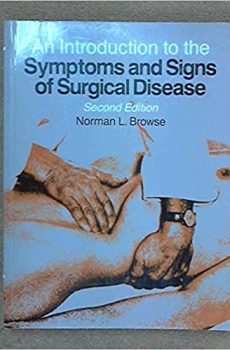
An Introduction to the Symptoms and Signs of Surgical Disease
3,244.00₹ 2,600.00₹
The bedrock of every good clinician’s success is the ability to obtain correct history and elicit all the abnormal physical signs from a patient. Professor Browse’s highly successful text takes the student step by step through the systematic application of the principles of history taking and clinical examination. The revised and updated second edition contains a description of the techniques of history taking and clinical examination, and a detailed account of the symptoms and signs of the commn surgical diseases. These descriptions are presented under the same headings used to describe the methods of examination. This is done to emphasize and impress upon the reader the importance of a systematic approach. The symtoms and signs are then analysed and interpreted to show the reader how to deduce the diagnosis
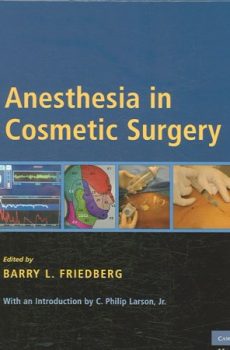
Anesthesia in Cosmetic Surgery
11,699.00₹ 2,339.00₹
One major by-product of the aging baby-boom generation is a surging interest in cosmetic surgery. Although procedures like facelifts and abdominoplasties (the ‘tummy-tuck’) are considered minimally invasive, the anesthetic protocols and regimens here are often overly complex and unnecessarily toxic. This reference will focus on all of the procedures that the anesthesiologist needs to be proficient in to adequately care for this group of patients. Perioperative care and pain management will be covered for the full spectrum of operations, and there will be special emphasis on level-of-consciousness monitoring of these patients.
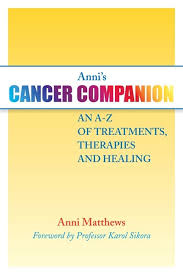
Anni’s Cancer Companion
1,120.00₹ 995.00₹
When Anni Matthews was diagnosed with cancer, she decided to do something really valuable with the experience: she produced a book that is a friendly companion for those who must face the disease.
Of huge practical help to anyone diagnosed with cancer and those who care for them, this book is a one-stop guide to making sense and use of the orthodox treatments, complementary therapies, and psychological, spiritual and holistic options available. Subjects ranging from the most current major advances in treatments and diagnosis to the small but effective ways of relieving the side-effects are explained clearly and concisely, often with humour and always with warmth.
Written by a bright, articulate woman, who was determined to have an informed say in what happened to her, Anni’s Cancer Companion marks a new generation of books about cancer. It is that rare thing: a reference book that is human.

Antidepressants: Past, Present and Future
19,900.00₹ 5,950.00₹
A comprehensive review of the current status of antidepressants – how we arrived at this point in their evolution and where we are going in both the near and the long term. It employs both a scientific and historical approach to accomplish these goals. This volume is intended for practitioners who use antidepressants on a daily basis in their practice as well as for the student and researcher. Each will find that it provides a comprehensive and logical approach to this important group of medications. This book is being published as we mark the end of the first 50 years of the modern antidepressant era.
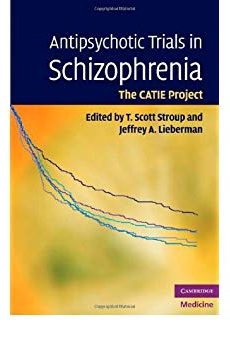
Antipsychotic Trials in Schizophrenia: The CATIE Project
9,900.00₹ 3,560.00₹
From the beginning of the use of chlorpromazine and other neuroleptic drugs, signs of parkinsonism (e.g., tremor, rigidity, and bradykinesia) were observed as frequent side effects and, despite numerous studies to the contrary, were considered to be inextricably linked to therapeutic antipsychotic effects. Within a few years, investigators also observed an association between these drugs and abnormal involuntary movements that came to be known as tardive dyskinesia (TD). These and other drug-induced extrapyramidal side effects (EPS) can be mistaken for or worsen primary psychotic symptoms, are sometimes irreversible or lethal, often necessitate additional burdensome side effects from antiparkinsonian agents, can be disfiguring and stigmatizing, and have been shown to influence compliance, relapse, and rehospitalization. As a result, EPS dominated concerns about tolerability of antipsychotic drugs for decades, and their elimination served as a major impetus for new drug research and development. In 1988, clozapine was found to have broader efficacy in schizophrenia with negligible EPS, stimulating the search for other antipsychotics with improved tolerability. The drugs that were introduced after clozapine came to be known as atypical or second-generation antipsychotics (SGAs) while the earlier drugs were now called typical or first-generation antipsychotics (FGAs). Industry-sponsored clinical trials suggested that SGAs were superior to FGAs in the treatment of schizophrenia, reducing psychotic symptoms and causing fewer EPS. Cumulative evidence supporting reduced liability for EPS with SGAs contributed to the widespread dominance of these drugs in the marketplace and fostered the concept of “atypicality” in the mechanism of action of the new drugs.
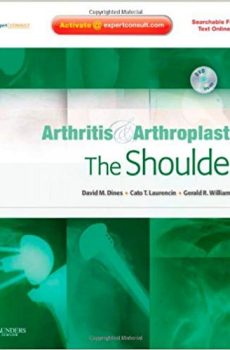
Arthritis and Arthroplasty: The Shoulder
18,830.00₹ 9,990.00₹
The Shoulder―a volume in the new Arthritis and Arthroplasty series―offers expert guidance on everything from patient selection and pre-operative planning to surgical approaches and techniques. Clear, evidence-based coverage details which technology and methodology used for total shoulder arthroplasty, reconstruction or revision is best for each patient. Access discussions of debates on total shoulder arthroplasty versus hemiarthroplasty; resurfacing, glenoid bone loss, infection, revision shoulder arthroplasty and more. Explore alternatives to total shoulder arthroplasty in younger arthritic patients and view expertly narrated video demonstrations of surgical techniques. In addition to providing practical, pragmatic advice in a concise, readable format, this Expert Consult title offers the full text of the book, as well as links to PubMed and periodic content updates, online at expertconsult.com.
- Access the full text of the book―as well as links to PubMed and periodic content updates on outcome data, component materials, and surgical techniques―online at expertconsult.com.
- Features procedural videos―narrated by experts―on the included DVD so you can see how to perform particular techniques.
- Covers reverse shoulder Arthroplasty (RSA), glenoid loosening, soft tissue failure and other hot topics to keep you abreast of the latest developments in the specialty.
- Provides evidence-based, clinically focused guidance on patient selection, pre-operative planning, technical considerations, disease specific options, the management and avoidance of complications, salvage and revision strategies, rehabilitation and more.
- Discusses variations in technique, including soft tissue releases and glenoid exposure, bone grafts, resurfacing or more radical removal of bone, and minimally invasive technique where the exposure is more limited so you can choose which is most effective for each patient.
- Explores alternatives to total shoulder arthropalsty in younger arthritic patients, including partial surface replacements, humeral head resurfacing, hemiarthroplasty, interpositional arthroplasty.
- Includes a review page in every chapter for quick reference to pearls and pitfalls for each topic.
- Presents photographs and interpretive drawings of surgical techniques in full color to bring out intraoperative details as they appear in the operating room.
Your purchase entitles you to access the web site until the next edition is published, or until the current edition is no longer offered for sale by Elsevier, whichever occurs first. If the next edition is published less than one year after your purchase, you will be entitled to online access for one year from your date of purchase. Elsevier reserves the right to offer a suitable replacement product (such as a downloadable or CD-ROM-based electronic version) should online access to the web site be discontinued.
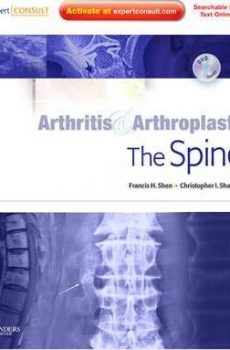
Arthritis And Arthroplasty: The Spine
18,830.00₹ 9,990.00₹
“The Spine” – a volume in the new “Arthritis and Arthroplasty” series – offers expert guidance on everything from patient selection and pre-operative planning to surgical approaches and techniques. Francis H. Shen, MD and Christopher I. Shaffrey, MD present clear, evidence-based coverage detailing which technology and methodology is best for each patient. Access discussions of debates on minimally invasive surgery; whether metal/polyethylene, metal-metal, or ceramic-ceramic is the best/most appropriate bearing surface; cemented vs. uncemented fixation of the components; and, more. View expertly narrated video demonstrations of surgical techniques. In addition to providing practical, pragmatic advice in a concise, readable format, this Expert Consult title offers the full text of the book, as well as links to PubMed and periodic content updates online.

Arthroscopic Rotator Cuff Surgery
10,990.00₹ 1,950.00₹
This text takes a comprehensive approach to rotator cuff disorders, including tears and arthroscopic techniques in surgical management. It addresses the latest topics, such as the conversion of mini-open repair to all arthroscopic repair, and answers key questions raised at instructional courses. Experts in the field present not only arthroscopic shoulder anatomy, cuff tear patterns, repair concepts, and other fundamentals, but also provide coverage of state-of-the-art techniques. The step-by-step approach is supplemented by a wealth of anatomical drawings and color photos.
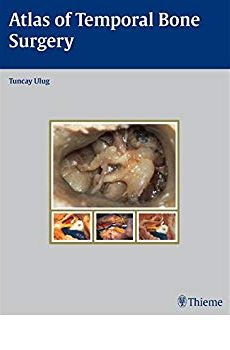
Atlas of temporal bone surgery
11,700.00₹ 6,990.00₹
Beautifully illustrated and comprehensive, this must-have atlas guides readers through the delicate, high-risk surgical approaches they need to successfully manage pathology of the temporal bone, the most complex anatomic area in the human body.Each consistently organized chapter addresses a different technique, beginning with a clear definition of the approach followed by a discussion of indications and key information on anatomic orientation, surgical steps, and, in many cases, surgical anatomy. Clearly labeled, full-color illustrations accompany step-by-step descriptions of common and unique operative techniques. The author, a world-renowned otorhinolaryngologist, provides detailed explanations of important anatomic landmarks and advice on how to choose the appropriate instruments at each surgical stage.




















